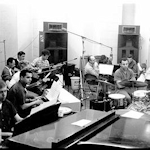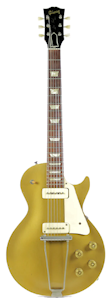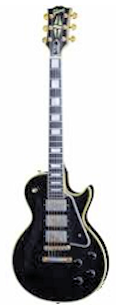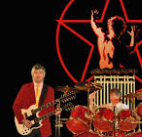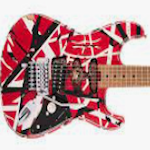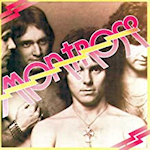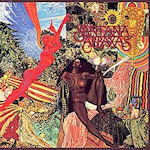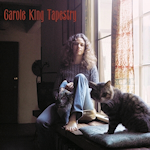The Gibson Les Paul is one of the most iconic and revered electric guitar models in history. Its rich history spans over several decades, beginning in the early 1950s. Here's a brief overview of the Les Paul's history:
Development and Introduction (1950-1952):
The Les Paul model was developed by Gibson in collaboration with renowned guitarist and inventor, Les Paul. The initial prototype, known as "The Log," was created by Les Paul himself in the late 1940s, named for the pine block running through the middle of the guitar. Hollow guitar sides or "wings" were added to achieve a conventional shape. Paul had brought his prototype to Gibson, but it was rejected.
In 1951, Gibson president Ted McCarty and his team began work on what would eventually become the Les Paul model. The intent in developing the guitar was not so much to compete with Fender's solid body electric as it was to outshine it; Gibson's would be a well-made-- and expensive-- guitar. McCarty's intent in approaching Les Paul for the right to imprint the musician's name on the headstock was mainly with an eye toward increased sales.
In 1952, Gibson officially introduced the Les Paul Goldtop model. It featured a solid mahogany body with a carved maple top, a glued-in mahogany neck, two P-90 single-coil pickups, and a trapeze tailpiece.
The Gibson Les Paul Custom (1954-1960):
In 1954, Gibson introduced the Les Paul Custom, also known as the "Black Beauty." It featured an all-black finish, multiple binding on the body and headstock, gold hardware, and an ebony fingerboard with mother-of-pearl inlays. The original Customs were fitted with a P-90 pickup in the bridge position and an Alnico V "staple" pickup in the neck. In 1957, the Custom was fitted with Gibson's new PAF humbucker pickups, and later became available with three pickups instead of the usual two.
When the original Les Pauls were discontinued in 1960, the Custom model's features and designation were transferred to a new SG Custom model.
Evolution and Innovations (Late 1950s-1960):
Gibson continued to refine and evolve the Les Paul model throughout the late 1950s and into the 1960s. In 1957, Gibson introduced the PAF (Patent Applied For) humbucking pickups, which provided a warmer and thicker tone compared to the original P-90 pickups. The Les Paul Standard was introduced in 1958, featuring a sunburst finish, a tune-o-matic bridge, and a stop tailpiece.
For all its innovations, the Les Paul Standard didn't sell well. The guitar was heavy, and Gibson was still marketing primarily to an older, jazz-oriented audience. As a result, fewer than 2000 of the model were sold 1958-1960.
In 1961, Gibson made some design changes to the Les Paul, giving it a thinner body and a double-cutaway shape. These models are commonly referred to as the "SG" (Solid Guitar) series. Les Paul did not approve of the changes, and asked his name be removed from the guitars. Even so, many press and promotional photos, and even album covers exist showing both Paul and his wife Mary Ford with 1961 SG Custom model guitars. And, for a period of time, some were still sold with "Les Paul" inscribed on the truss rod covers.
Discontinuation (1960) and Reintroduction (Late 1960s-1970s):
Despite its initial success, sales of the Les Paul declined during the late 1950s due to competition from other guitar manufacturers. As a result, Gibson decided to discontinue the Les Paul model in 1961 and replaced it with the aforementioned SG series.
In the mid-1960s, seeking to emulate their American blues guitar heroes, British rock guitarists began to embrace the original Les Paul models. Subsequently, popular demand prompted Gibson to reintroduce the Les Paul in 1968. This reintroduction included both the "Standard" and "Custom" models, featuring the original single-cutaway design and a range of finishes.
The Gibson Les Paul Deluxe (Late 1960s-1985):
In the late 1960s, Gibson also released the Les Paul Deluxe, which had mini-humbuckers instead of full-sized humbuckers. The pickups were surplus Epiphone inventory, and were fitted into pre-carved P-90 size cavities by means of an adapter ring. Several notable guitarists used Deluxes over the years, although many opted to switch the pickups to full-size humbuckers. The Deluxe went through multiple neck and body construction changes over the years, but was eventually discontinued in 1985.
Professional (1969-1971) and Recording (1971-1979) Models:
In 1969, the Les Paul Professional was introduced. The model forewent the cosmetic embellishments of the Standard and Custom and was aimed at the studio musician. Low impedance pickups replaced standard humbuckers, and two toggle switches provided additional tonal controls. The model was not popular, however, and was discontinued after selling less than 120 units. It would be replaced by the "Recording" model.
The Les Paul Recording differed from the Professional in only minor ways, primarily the controls layout. It was, however, the model Les Paul himself preferred.
Les Paul Studio (1983-present):
The Studio followed the Recording as a model designed to appeal to those who wanted the classic Les Paul sound at a lower cost than Standard or Custom models, again primarily studio musicians. Unlike the Professional and Recording, the Studio was basically a stripped-down Standard with a slightly thinner body. Features such as body binding, neck binding, and headstock inlays were not available.
Over time, revisions were made to the Studio to improve playability and reduce weight, a complaint often lodged against the Standard and Custom. Ironically, Studio models gradually began to be offered with most of the cosmetic features the model was originally intended to eschew.
Modern Era and Variations (1980s-Present):
Since the 1980s, Gibson has continued to produce various Les Paul models, offering different finishes, pickups, and features to cater to the preferences of modern guitarists. Some notable variations include the Les Paul Classic, Les Paul Traditional, Les Paul Custom Lite, and Les Paul Custom Pro. Gibson has also collaborated with famous guitarists to create signature Les Paul models, such as the Jimmy Page Signature and the Slash Signature Les Pauls. Gibson also offers Les Paul models under their more economical Epiphone brand.
The Gibson Les Paul's timeless design, powerful tone, and notable association with legendary guitarists have made it a highly sought-after instrument, securing its place in music history as an iconic electric guitar model.
